
A platform that encourages healthy conversation, spiritual support, growth and fellowship

NOLACatholic Parenting Podcast
A natural progression of our weekly column in the Clarion Herald and blog

The best in Catholic news and inspiration - wherever you are!
Majestic sacred music is blowing in the wind
-
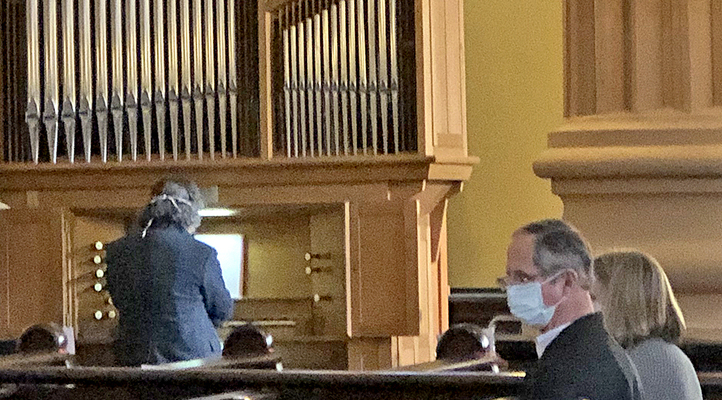 By Christine Bordelon
By Christine Bordelon
Clarion HeraldMozart labeled the pipe organ the “king of instruments.” Others have called it the “voice of God.”
The organ’s versatility and genuine sound can’t be matched, say members of the New Orleans chapter of the national Organ Historical Society.
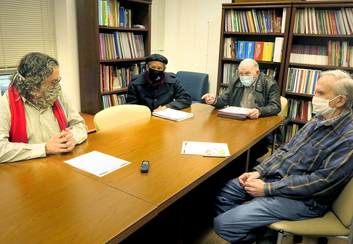 “The organ is a wind instrument and supports singing, in my opinion, better than other instruments,” said Bennett Britt, current president and charter member of the local society. “It has many different colors of tone. It is able to better support the congregation more fully.”
“The organ is a wind instrument and supports singing, in my opinion, better than other instruments,” said Bennett Britt, current president and charter member of the local society. “It has many different colors of tone. It is able to better support the congregation more fully.”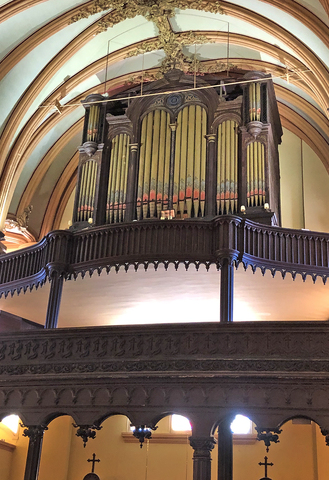
Versatile, powerful“Just like in an orchestra, you have all these different instruments, but no instrument has the versatility of a pipe organ, especially one with lots of ranks (sizes of pipes) and stops in it,” said organ society member Robert Pedesco. “It is so different from any other instrument in the world. An orchestra can’t take the place of a pipe organ, even though it can approximate it. One cannot substitute for the other.”
While the New Orleans chapter’s activities – including a recital scheduled in March 2020 – have been suspended since the COVID-19 pandemic struck, society members remain active either playing or keeping track of the 20 or so major pipe organs in local churches.
“The Organ Historical Society’s primary interest is in organs of historical merit,” Britt said. “We have a love for those. One of our missions is to take care and preserve the history that we have.”
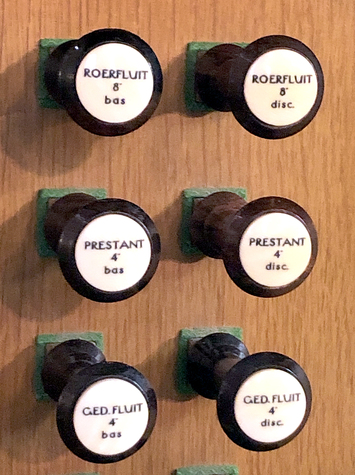 Its 55 members eagerly recall local pipe organ history, mentioning the pipe organ of St. Rita Church in New Orleans that was locally built by Art Schoenberger in 1971; the organ at St. Stephen Church, which is a smaller version of St. Patrick’s in New York; and organs at St. Mary’s Assumption, Our Lady of the Rosary, St. Patrick and St. John the Baptist churches in New Orleans.
Its 55 members eagerly recall local pipe organ history, mentioning the pipe organ of St. Rita Church in New Orleans that was locally built by Art Schoenberger in 1971; the organ at St. Stephen Church, which is a smaller version of St. Patrick’s in New York; and organs at St. Mary’s Assumption, Our Lady of the Rosary, St. Patrick and St. John the Baptist churches in New Orleans.“Every organ has a story behind it,” Pedesco said.
Society members are as diverse as the pipe organs they care for.
“The Organ Historical Society chapter in New Orleans has faithful members who all are not musicians, but they bring engineering skills, electrical skills or management skills,” said member Robert Zanca, local chapter archivist and organist/music director at St. Alphonsus Parish in New Orleans since 1993. “They all enjoy the organ. ... When we are trying to make an unplayable old organ playable, there are all kinds of skills needed. Sometimes it starts with needing an electrician to get electricity to an outlet.”
Organ sound hooked them
Members’ affinity for organs began as children. Their passion grew as they played the instrument and discovered its majestic history dating to the seventh century.
Britt, an organist and choirmaster for 57 years, said when he was 6 years old in 1947, he watched the two-month installation of a three-manual Kilgen organ at the 15th Avenue Baptist Church in Meridian, Mississippi. That experience mesmerized him.
“I remember the exact spot where I was sitting in the balcony for that dedicatory organ,” he said. “I was astounded by the power of the instrument. I’m not sure I would have had the same reaction to an electronic instrument. Growing up, I would look at that instrument and say, ‘What a wonderful thing to have so much power at one’s command.’”
Britt said he is far from alone in his sentiment for organs. He mentioned how the sound of a new Wicks organ at a Thibodaux parish, where he played and led the campaign to buy the instrument, enchanted a young boy in 1982 to ask Britt to teach him how to play. The boy eventually earned a doctorate from Louisiana State University and became head of organs at the University of Tampa.
“He told me the same story that I had lived,” Britt said.
Norman Maunz, the organist at Grace Lutheran Church in New Orleans’ for 26 years, was exposed to organs before he was born – his father was a minister in the United Church of Christ in New Orleans. A church organist since high school graduation, Maunz said an organ’s sound has more variety than a piano.
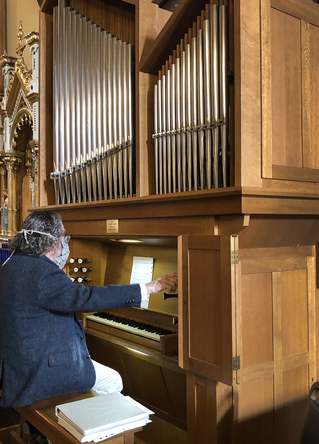 Maunz had heard reed and pipe organs at his Metairie childhood church growing up, but hearing a pipe organ in Europe as a teen prompted a switch from piano to organ lessons.
Maunz had heard reed and pipe organs at his Metairie childhood church growing up, but hearing a pipe organ in Europe as a teen prompted a switch from piano to organ lessons.“The sound of a pipe organ is real,” said Maunz, who has a bachelor’s degree in organ performance from Loyola and a master’s from the University of Louisville. “It is a wind-blown instrument. An electronic organ, to me, sounds so fake. It’s so sterile. There is no life to it.”
“No resonance,” said Pedesco, who repairs organs.
Pedesco was captivated in 1961 when he heard St. Louis Cathedral’s organ for the first time at a wedding.
“I said to myself, ‘There is no sound like this,’” he recalled. “It was such a festive thing and the difference it made – compared to the electronic one in the church I grew up in. The five years after that I started going to other churches – St. Leo, Our Lady of the Rosary and St. Rose of Lima – with pipe organs intact. I got to take care of the pipe organ at St. Leo for 20 years, but it all started at the cathedral 60 years ago.”
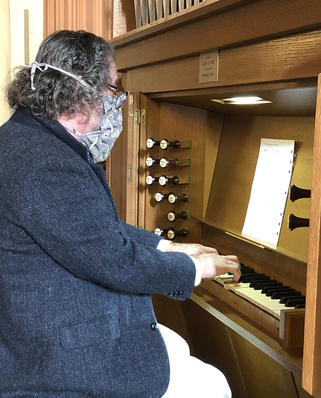 Zanca, who has a music history and literature degrees from Georgia State University and pipe organ maintenance experience, was first exposed to a small organ at St. Louise de Marillac Church in Arabi. Then his family moved to Mississippi for a short time.
Zanca, who has a music history and literature degrees from Georgia State University and pipe organ maintenance experience, was first exposed to a small organ at St. Louise de Marillac Church in Arabi. Then his family moved to Mississippi for a short time.“This light went on – this is what an organ is,” he said upon hearing Our Lady of the Gulf Church’s pipe organ. “This is what organ music is.”
Zanca honed his musical skills in the St. Louis Cathedral Choir under the direction of legendary cathedral music director Dr. Elise Cambon and at Loyola University New Orleans, where she was a professor.
“I learned a lot from turning pages at the cathedral for Dr. Cambon,” Zanca said.
Superior sound
Society members extol the pipe organ’s superior sound and don’t comprehend why churches – of all denominations, not just Catholic – opt for electronic organs that digitally reproduce sound. Zanca said the internet has made it easy for churches to buy recorded organ music from famous churches such as Notre Dame Cathedral and play it through speakers.
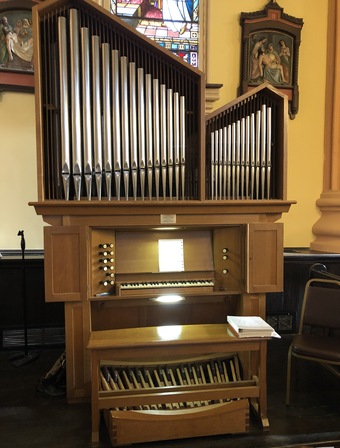
While it seems plausible, it doesn’t work.“It’s not authentic,” Zanca said. “If you have a small church, you don’t need a very large organ for the church. You may need a very large substitute for your ego, but it’s not what the church requires. In the Catholic Church, we have the documents (the General Instruction of the Roman Missal, GIRM, and “Sing to the Lord” from the USCCB) that tell us that the organ is the primary instrument of worship.”
Zanca said electronic organs offer the same technology as cell phones, and, like cell phones, the technology becomes obsolete quickly and requires replacement after a few years.
All extol the pipe organ’s mechanical “technology,” dating back 900 years. And some organs – like one in Sion, Switzerland – date to the 14th century and remain in use with little maintenance.
“It’s very straightforward technology,” Zanca said. “You invest, and it lasts. The pipe organ is the real thing. People have been conditioned to believe some things about the pipe organ – how expensive they are and difficult they are to maintain. If you want the real thing, you have to pay up front, but the investment is long term.”
As current as ever
Britt hopes to dispel the notion that pipe organs are a thing of the past.
“That is not true,” he said. “There are many (organ) shops in the U.S. today. Many of today’s craftsmen are some of the best that have ever been, in my judgment, as I look at the instruments being installed today. These are far from things of the past.”
For more information on the local society, contact Britt at [email protected].




